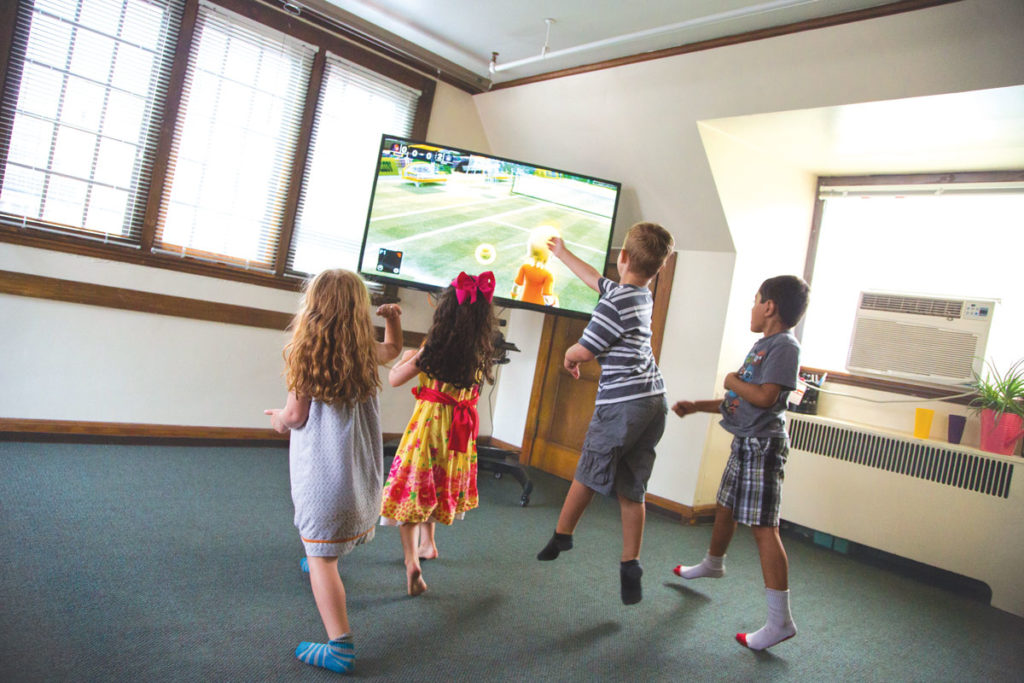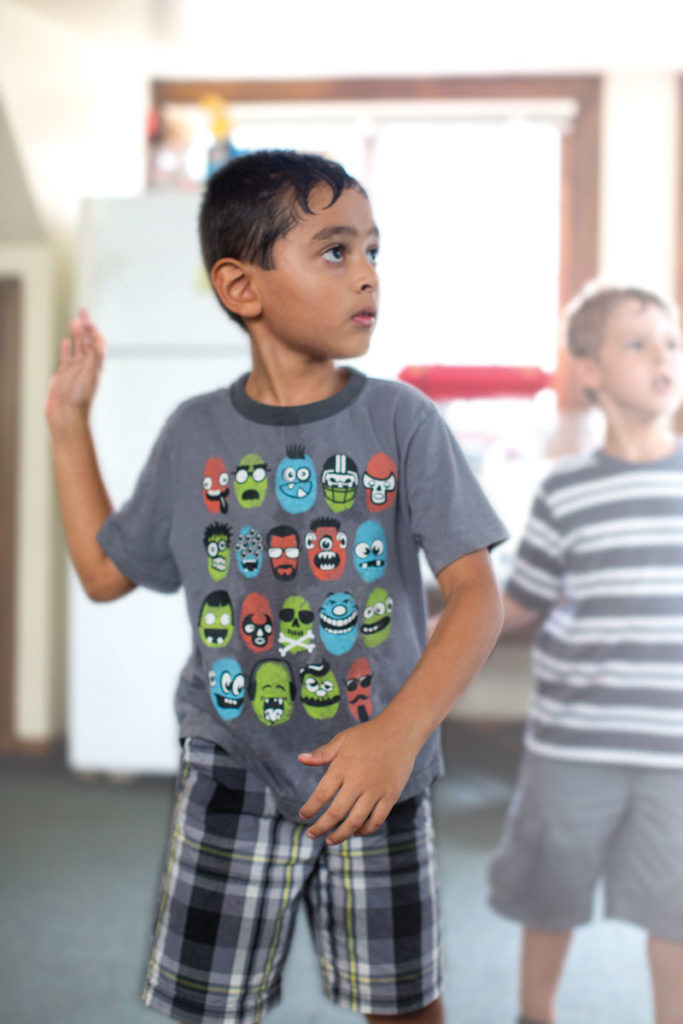By Tyra E. Haag (’04)
OUTSIDE VS. INSIDE.
PLAYGROUND VS. TV.
HULA-HOOPS VS. XBOX.
It’s a long-held belief that children who play outside experience more physical activity than those who spend a lot of their time in front of a television.
But what if that’s not necessarily true?
Recent graduate Britt MacArthur (’12) took an interest in children and physical activity while working as an undergraduate at UT’s Healthy Eating and Activity Lab (HEAL), and she began to wonder if that belief about outdoor play might not be accurate because of the rise of a different kind of video gaming.
“I was interested in exploring the idea of whether a child’s active video gaming could have physical activity benefits either close to or similar to a child’s outdoor play,” says MacArthur. “The idea had not been explored before and after close consultation with professors Hollie Raynor and Dawn Coe, both encouraged me to move
forward with the idea.”
MacArthur began working with Raynor, director of HEAL and professor of nutrition, as well as Coe, an associate professor of exercise physiology, to put her theory to the test.
“Previous active video gaming studies had not investigated the physical activity accumulated by these games compared to that of unstructured outdoor play in
young children,” says Raynor.
For the study, children between the ages of five and eight were given three
accelerometers—one for the hip and one for each wrist. The accelerometers on
the wrists were placed to better assess upper-body movement, which may be very
different in outdoor play compared with playing an active video game.
During a three-week period, each child engaged in one active video-gaming
session and one unstructured outdoor playtime. Each session lasted twenty
minutes, and children could stop and rest at any point.
The outdoor session took place on a playground with two grassy areas, a small
paved area, a climbing tree, hula-hoops, playground equipment, and an assortment
of balls. Children were allowed to participate in any type of activity. The active video-gaming session took place with a forty-inch television and the Xbox 360 Kinect, a controller-free gaming system that incorporates the whole body in the game through motion sensors and skeletal tracking. The Kinect Adventures River Rush video game was
selected for the study as it includes total body participation, requires no special set of skills to play, and was rated “E for everyone” by the Entertainment Software Rating Board.
Trained observers used the Children’s Activity Rating Scale to record activity levels, and estimated energy expenditure was reported in minute-by-minute counts from the accelerometers.
THE RESULTS
MacArthur, Coe, and Raynor’s findings— which were published in the Games
for Health Journal—suggest that in some cases “video games which wholly
engage a child’s body can be a source of physical activity.”
A significant difference between active video gaming and outdoor play was found
for the accelerometer located on the hips of the children, with active video gaming
having a greater percentage of moderate to vigorous-intensity physical activity than unstructured outdoor play.
“The strengths of the study include the use of measurement tools considered to
be very accurate at measuring activity,” Raynor says. “No one else has used
measures with this degree of accuracy in comparing active video gaming with outdoor play in young children.”
Raynor, Coe, and MacArthur aren’t saying video games should replace outdoor play,
but assert that there are better choices among the types of video games parents
allow their children to play.
MacArthur started doing research as an undergraduate student at UT and her first
research project was honored at a UT’s Exhibition of Undergraduate Research
and Creative Achievement event, which annually showcases research and creative
activities by undergraduate students in collaboration with a faculty mentor.
After the study was published, nearly 200 other national and international outlets
like NPR, the Huffington Post, MSN, Telegraph UK, and the International
Business Times picked up the story.
“I would love to continue with the research as working with professors Raynor and Coe was a sincere pleasure,” says MacArthur. “Both are phenomenal researchers and academicians, and were great mentors throughout the process.”
MacArthur doesn’t see herself continuing in research currently, since her career
path has led her to Sacramento, California, where she is an outpatient orthopedic physical therapist.
“I am hopeful that future students will continue with the research to see how far
it can progress.”
Photography by Dani Rose (’08)



